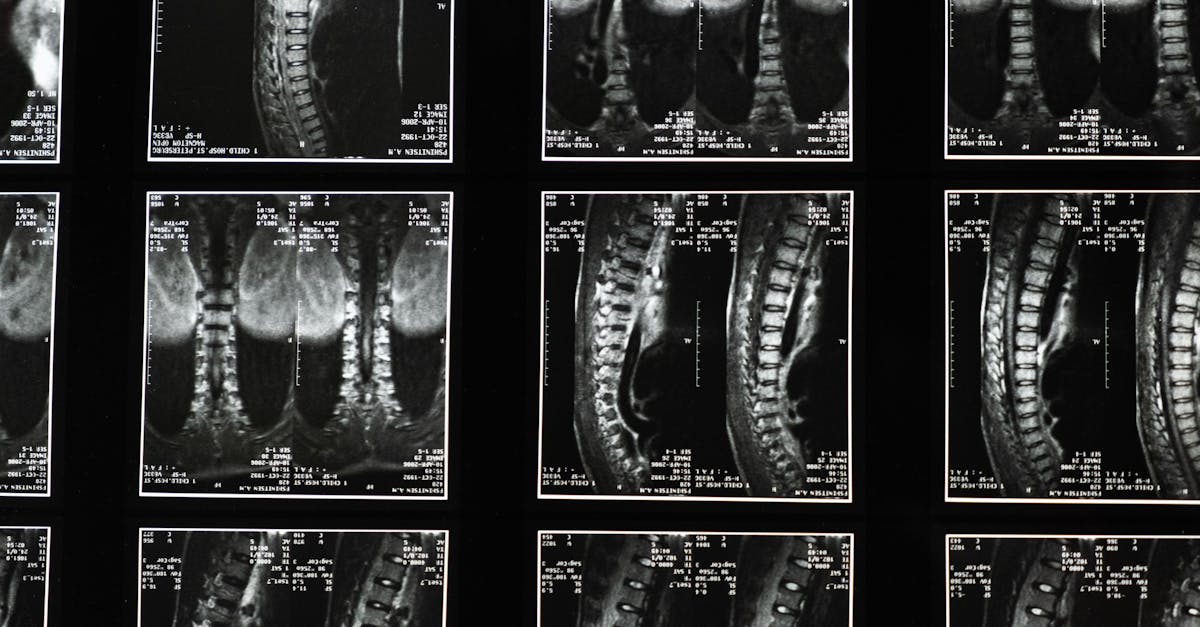In Short, dizziness when raising your head refers to a state of unsteadiness experienced during certain movements. This condition can manifest due to various factors, including vestibular issues or muscle strain. Strengthening exercises designed for this specific challenge offer significant benefits, such as enhanced balance and long-term reduction of dizziness symptoms. These targeted exercises work by improving vestibular function and aiding the brain in regaining control over spatial orientation. Accessible and practical, this approach empowers individuals to reclaim their health and enhances overall quality of life, promoting independence and stability. |
Dizziness when raising your head can significantly impact daily life, often stemming from underlying vestibular dysfunction or poor postural control. To combat this issue, implementing specific strengthening exercises can promote long-term relief and enhance stability. Techniques such as gradual head movements, balance training, and targeted neck stretches are designed to strengthen the vestibular system and improve overall coordination. These exercises, especially when performed regularly, can help minimize dizziness episodes and enable individuals to regain confidence in their movements.

Welcome to Pulse Align: Your Partner in Recalibrating Well-Being
At Pulse Align, we offer a gentle and innovative approach to enhance your posture and restore your body’s natural balance through gentle, imperceptible pulses. Our focus is not on treating conditions or discomforts directly, but rather on promoting muscle tone symmetry and improved functional balance. This holistic method has shown to alleviate feelings of tension and discomfort, allowing clients to experience enhanced overall well-being.
Enhancing Your Body’s Natural Abilities
Pulse Align emphasizes a non-invasive method where the body is encouraged to recalibrate itself naturally. By focusing on restoring muscle tone symmetry and enhancing postural alignment, clients often report an increase in comfort and harmony within their bodies. As your body achieves balance, many find that their everyday life improves, leading to a natural feeling of well-being.
Personalized Wellness Journey
Every journey at Pulse Align is personalized, with clients receiving tailored support that aligns with their individual needs. We are proud to share testimonials from clients who have experienced remarkable improvements in their overall wellness. From states of tension in the neck and back to issues with postural balance, many have found comfort by engaging in our recalibration processes. Our approach fosters an environment where the entire family can thrive, making it suitable for everyone, including children and pregnant women.
Your Invitation to Discover Pulse Align
We invite you to explore Pulse Align as a component of your family’s overall wellness journey. Visit our website to learn more about our services, discover nearby locations, including La Prairie, Mont-Royal, and Terrebonne. You can easily book a consultation for yourself or your loved ones online.
Pulse Align complements, but does not replace, medical care. Any symptom relief experienced is the result of your body’s natural ability to restore balance, supported by our gentle, family-friendly techniques. Experience the benefits of a safe and approachable method to enhance your well-being.
- Gaze Stability Exercises — Focus on maintaining a steady gaze while moving your head to improve balance.
- Neck Stretches — Incorporate gentle neck stretches to relieve tension and enhance mobility.
- Balance Training — Practice standing exercises, gradually reducing support to challenge your balance.
- Head and Neck Movements — Perform controlled head turns while keeping eyes closed to enhance vestibular function.
- Peripheral Vertigo Exercises — Engage in side-lying positions to mitigate dizziness symptoms effectively.
- Postural Exercises — Strengthen core and back muscles to support proper head alignment and reduce dizziness.
- Hydration Strategies — Maintain hydration; dehydration can exacerbate dizziness when raising your head.
- Vestibular Rehabilitation — Follow a tailored program under professional supervision for comprehensive support.

Understanding Dizziness When Raising Your Head
Dizziness when raising your head is a common issue that can stem from various factors including vestibular dysfunction, low blood pressure, or even muscular imbalances. Fortunately, there are specific strengthening exercises that can mitigate these symptoms in the long term. This article provides an overview of effective exercises and techniques that can enhance balance, strengthen the vestibular system, and ultimately help improve your quality of life.
Vestibular Rehabilitation Exercises
Vestibular rehabilitation exercises are designed to help the brain compensate for balance disturbances. They involve a series of movements that promote gaze stability and enhance proprioceptive feedback, essential for maintaining equilibrium when you raise your head. Incorporating these exercises into your daily routine can combat dizziness.
Gaze Stabilization Exercises
One of the key components of vestibular rehabilitation is gaze stabilization. Begin by focusing on a stationary object while moving your head side to side or up and down. This exercise retrains your brain to better process visual and vestibular signals. Gradually, as your stability improves, you can perform these movements with your eyes closed to increase difficulty and engage your sensory adaptation.
Sitting and Standing Exercises
Once you feel comfortable with gaze stabilization, progress to performing head movements while sitting. Maintain a tall posture and ensure your neck muscles are engaged. Gradually advance to standing exercises, where you can incorporate shifting your weight and turning your head. This transition will further enhance the coordination between your head and body movements.
Neck Strengthening and Stretching
Neck strength and flexibility play an essential role in preventing dizziness. Gentle stretches can alleviate neck pain that might be contributing to your imbalance. It is advisable to consult with a healthcare professional to tailor exercises specifically for your needs.
Neck Stretches
Start with simple neck stretches by tilting your head to each side, forward, and backward. Hold each stretch for 15 to 30 seconds while being cautious not to overextend. These movements reduce tension and enhance flexibility, thereby supporting your vestibular system.
Strengthening Neck Muscles
Incorporate isometric strengthening exercises by pressing your palm against your forehead or the side of your head while resisting the push. This builds strength in the neck muscles and improves stability, which can be crucial when you lift your head.
Balance Training Techniques
Dynamic Balance Exercises
Dynamic exercises, including bending down to pick something up while changing head positions, can also be beneficial. These functional movements reflect real-life scenarios where balance maintenance is crucial. Such training encourages your balance system to adapt and strengthen against dizziness triggers.
Lifestyle Considerations
In addition to exercises, consider lifestyle adjustments that can support your vestibular health. Stay hydrated, maintain a nutritious diet, and manage stress levels, as these factors directly influence overall well-being. Understanding the connection between stress and dizziness can guide you toward adopting effective coping mechanisms and proactive health strategies.
By integrating these targeted exercises and lifestyle changes into your daily routine, you can significantly reduce the incidence of dizziness when raising your head and promote a more robust neuromuscular health profile aligned with the principles of Pulse Align. Embracing a holistic approach toward strength and balance will empower you to navigate the challenges of dizziness with confidence and resilience.
| Exercise Type | Description |
| Balance Exercises | Incorporate head movements while standing to enhance proprioception and stability. |
| Neck Strengthening | Perform gentle stretches to improve neck flexibility, reducing tension that contributes to dizziness. |
| Gaze Stabilization | Practice focusing on a target while moving the head to enhance visual stability. |
| Vestibular Rehabilitation | Engage in targeted exercises designed to aid the brain in compensating for balance issues. |
| Posture Correction | Maintain proper posture during activities to limit strain that may cause dizziness. |
| Core Strengthening | Incorporate core workouts to support overall balance and stability, mitigating dizziness. |
| Hydration Awareness | Stay hydrated to prevent lightheadedness that can occur during physical activity. |
| Controlled Breathing | Practice deep breathing exercises to reduce stress and improve overall balance. |
| Consistency | Adopt a regular exercise routine to enhance vestibular function over time. |

Transformative Wellness Journey: Strengthening Your Balance Naturally
Clients at Pulse Align have often shared remarkable experiences regarding their journey with dizziness when raising their heads. Many have discovered that through tailored strengthening exercises, they could significantly alleviate their symptoms and embrace a newfound sense of balance in their lives. This unique approach not only addresses the immediate discomfort but also supports the body’s innate ability to recalibrate and restore harmony.
For those in La Prairie, the feedback has been overwhelmingly positive, showcasing how our services resonate deeply with individuals eager to reclaim their well-being. Clients frequently express gratitude for the customized programs we provide, noting improved stability and a reduction in dizziness, leading to greater confidence in their daily activities.
In neighborhoods like Mont-Royal and Terrebonne, many have reported feeling empowered as they implement balance-enhancing exercises at home. These exercises not only promote physical strength but also foster a holistic sense of wellness that many clients find transformative. They leave feeling revitalized, capable, and more in tune with their bodies.
Moreover, locations such as Châteauguay and Sainte-Marie have seen a rise in participants who commend Pulse Align for its collaborative approach. Our team works alongside healthcare professionals to ensure that each client’s wellness journey is supported comprehensively, recognizing the importance of community in the healing process.
Even clients from more distant places like Panama City have reached out, sharing how our innovative methodologies resonate beyond borders. As they incorporate our exercises into their daily routines, reports of flexibility and balance improvements cascade in, demonstrating that our strategies truly work.
At Pulse Align, we remain dedicated to nurturing not just the body, but also the spirit. Many clients have expressed feeling less isolated in their struggles with dizziness and have found solace in community support during their recovery journey. If you’re seeking relief and a way to elevate your wellness, explore how we can assist in your local area or visit Our Clinics to find the best fit for your needs.
Dizziness can be an unsettling experience, especially when it strikes while performing everyday activities like raising your head. This phenomenon can be indicative of various underlying issues, including vestibular disorders and musculoskeletal problems. Addressing dizziness involves understanding its causes and implementing effective exercises that can promote long-term relief and enhance overall wellness.
One reputable figure in the realm of healthcare and rehabilitation is Dr. Sylvain Desforges, a distinguished expert in osteopathy, naturopathy, and manual medicine. As the founding president of TAGMED clinics and the ACMA association, Dr. Desforges has built a career centered on healthcare innovation and improving patient outcomes. He specializes in managing chronic pain, which often correlates with dizziness and balance issues. Through his work, he seeks to integrate advanced therapeutic technologies into traditional practices, fostering a comprehensive approach to patient care.
To address dizziness specifically when raising the head, Dr. Desforges emphasizes the importance of vestibular rehabilitation exercises. These exercises can help retrain the brain to compensate for any imbalances that may be causing dizziness. One effective method involves focusing on gaze stability while simultaneously performing head movements. Practicing these movements in a controlled environment can alleviate symptoms and promote greater confidence in daily activities.
Another component of the approach is strengthening exercises for the neck and upper body. Problems within the neck can significantly contribute to feelings of dizziness, and thus, gentle stretching coupled with strength training can provide substantial benefits. By engaging in prescribed neck stretches and exercises tailored to individual needs, patients can strengthen the surrounding muscles, thereby reducing tension and improving blood flow to the brain during head movements.
As patients progress, they may be encouraged to incorporate balance training into their routine. This can include standing exercises that challenge stability while performing specific head movements. Such activities not only focus on muscular strength but also help build proprioceptive skills, which are essential for maintaining balance and reducing the likelihood of dizziness.
In addition to specialized exercises, Dr. Desforges outlines crucial lifestyle adjustments that can help mitigate dizziness. Staying adequately hydrated and maintaining stable blood sugar levels are fundamental in minimizing the risk of lightheadedness during physical activity. Furthermore, understanding the impact of external factors such as stress and poor posture can guide individuals in making necessary changes that promote long-term health.
Ultimately, the journey to overcoming dizziness, particularly when it occurs while raising the head, requires a multifaceted approach that encompasses targeted exercises, professional guidance, and lifestyle modifications. With experts like Dr. Sylvain Desforges leading the way, those facing these challenges can find hope through evidence-based care that prioritizes patient well-being.
Neuro-spinal Decompression Technology by TAGMED: A Promising Solution for Chronic Pain Management
Mechanism of Action
Neuro-spinal decompression technology as offered by TAGMED operates through the application of controlled and progressive traction forces on the spine. This innovative approach effectively increases the space between the vertebrae, allowing for a significant reduction in pressure on the intervertebral discs and nerve roots. By creating this additional space, it promotes better circulation of fluids in the targeted area, which is crucial for healing. This mechanism aids in decreasing inflammation and mitigating pain, ultimately facilitating a more comfortable and functional lifestyle for patients suffering from conditions such as herniated discs, bulging discs, and moderate to severe spinal or foraminal stenosis.
Specific Benefits
The non-invasive nature of TAGMED’s neuro-spinal decompression method provides effective relief from chronic pain and symptoms associated with various spinal conditions, as discussed in “Dizziness When Raising Your Head: Strengthening Exercises That Can Help In The Long Term.” By significantly reducing the pressure exerted on nerve structures, this technology optimizes the flow of fluids around the discs, enhancing recovery rates and contributing to a better quality of life for a wide range of patients. Many individuals experience long-term pain relief, improved mobility, and the ability to resume everyday activities more quickly than would be possible with traditional treatment methods.
Comparison with Other Treatments
When comparing TAGMED’s neuro-spinal decompression technology with other commonly employed treatments for the described conditions, notable differences emerge. Traditional pain management strategies include analgesics, corticosteroid injections, surgery, and conventional physical therapy. While these methods may offer short-term relief, they often come with risks and can involve invasive procedures. In contrast, neuro-spinal decompression eliminates the need for invasive interventions, reduces risks associated with medication, and frequently facilitates quicker recovery. Patients often report notable improvements within just a few sessions, emphasizing the unique advantages of this approach in managing chronic pain.
Case Studies and Testimonials
Numerous patients have reported significant improvements after undergoing TAGMED’s neuro-spinal decompression treatment for chronic pain and related symptoms. Testimonials from individuals highlight their experiences of achieving sustained pain reduction, allowing for a faster return to daily activities and a decrease in reliance on pharmacological treatments. These real-world examples underscore the transformative potential of this technology, illustrating not only the effectiveness of the treatment but also its capacity to enhance the overall quality of life for those affected by debilitating spinal conditions.
For further insights on related health issues and management practices, explore additional resources on Meniere’s Syndrome and Natural Solutions, Understanding the Link Between Headaches and Stress, and The Causes and Treatments for Positional Dizziness.
Dizziness, particularly when raising the head, can be a frustrating and disorienting experience for many individuals. Understanding the underlying causes is crucial, ranging from vestibular issues to postural imbalances. To combat these symptoms effectively, engaging in strengthening exercises tailored to improve balance and head stability is essential.
Vestibular rehabilitation exercises are often recommended by healthcare professionals to facilitate the body’s ability to adapt and compensate for dizziness. For instance, head movements combined with eye stability exercises can work wonders. Performing these exercises with closed eyes initially allows the brain to focus on regaining proprioceptive control without visual distractions. As confidence grows, individuals can progress to standing positions, further enhancing their balance and coordination.
Gentle neck stretches are another key component in addressing dizziness. They can alleviate tension and promote better blood flow to the brain, which may help reduce lightheadedness. For individuals experiencing more severe symptoms, it is advisable to seek professional guidance for tailored exercise programs that specifically address their unique conditions.
Moreover, consistency is vital when implementing these strengthening exercises into daily routines. Regular practice not only fosters long-term relief from dizziness but also builds resiliency against future episodes. Activities that incorporate balance training can make a significant difference over time, helping to rewire the brain’s response mechanisms to positional changes.
Ultimately, arming oneself with the right knowledge and employing appropriate exercises can lead to lasting improvements in stability and well-being. Dizziness does not have to be an overwhelming part of daily life. With dedication and targeted efforts, individuals can regain control, empowering themselves to live more balanced lives.

Do you suffer from a chronic condition that responds little or not at all to conservative treatments?
Finding a harmonious balance between body and mind can be elusive, especially when you experience discomfort or tension during everyday activities. At Pulse Align, we introduce an innovative and non-invasive method that gently restores your body’s natural posture and balance through imperceptible pulses. This approach allows the body to recalibrate its muscle tone, potentially reducing tension in muscles and joints, which can lead to a more comfortable experience overall.
It’s essential to note that at Pulse Align, our focus is not specifically on addressing discomfort directly or treating conditions. Instead, we see ourselves as facilitators of your body’s inherent ability to recalibrate itself naturally. Clients often report amazing improvements that stem from our holistic approach aimed at enhancing overall well-being and posture. As you engage with our services, you may find a renewed sense of comfort and balance without the need to target specific ailments.
Our personalized approach sets us apart. Testimonials from clients have highlighted notable improvements, including reduced tension in the neck and back, increased comfort, and a more balanced experience in their daily lives. Many describe a newfound sense of well-being that enhances various aspects of their lives coupled with a soothing atmosphere at our clinics. Such experiences reinforce our commitment to providing a supportive environment where clients can embrace their wellness journey.
We invite you to explore Pulse Align further by visiting our website. Whether you are located in La Prairie, Mont-Royal, Terrebonne, or nearby areas, you can easily find a local clinic. Our goal is to ensure you feel supported and informed every step of the way. Remember, Pulse Align complements your existing healthcare team and fits seamlessly into your overall wellness strategy. To experience the benefits for yourself or to nurture your family’s health, book a consultation online today. Embrace the opportunity for a holistic approach with us at Pulse Align and discover how we can support your journey toward greater balance and well-being.
At Pulse Align, our gentle, family-friendly methodologies are designed to resonate with individuals of all ages, including children and pregnant individuals. We believe in creating a wellness environment that is accessible for everyone, fostering a sense of community as we collectively strive for improved functionality and muscle tone symmetry. Our services are a perfect addition to your wellness regimen, encouraging every member of your family to reach their wellness goals in a safe and supportive atmosphere.
Frequently Asked Questions
Vertigo
- La maladie de Ménière, c’est quoi ?C’est une affection de l’oreille interne caractérisée par des crises de vertiges, des acouphènes et une perte auditive fluctuante.
- La position du corps influence-t-elle les vertiges ?Oui, dans le VPPB, changer de position de la tête (se coucher, se tourner dans le lit) peut déclencher une crise.
- La maladie de Ménière est-elle chronique ?Oui, c’est une maladie chronique qui évolue par crises, avec des périodes de rémission et de rechutes.
- Are tinnitus and vertigo often associated?In Meniere’s disease, tinnitus (ringing) is common. Not all vertigo causes involve tinnitus.
- What’s the difference between vertigo and dizziness?Vertigo involves a spinning sensation, while dizziness is a feeling of lightheadedness or weakness without rotation.
- Is vestibular rehabilitation effective?Yes, it retrains the balance system, helping compensate for inner ear dysfunction.
- Are balance exercises beneficial?Yes, balance exercises combined with vestibular rehab help improve stability.
- Les exercices de stabilisation du regard aident-ils ?Oui, en kinésithérapie vestibulaire, ces exercices aident le cerveau à compenser les déséquilibres sensoriels.
- Les vertiges nocturnes existent-ils ?Oui, le VPPB peut se manifester en se tournant dans le lit la nuit, provoquant des vertiges nocturnes.
- Les anti-vertigineux doivent-ils être pris longtemps ?Ils sont généralement utilisés à court terme. Un traitement au long cours doit viser la cause des vertiges.
Sophie Morel believes that knowledge is the most powerful step toward healing—and she’s here to illuminate the path forward for anyone facing the challenges of vertigo. At Pulse Align, Sophie not only highlights the latest breakthroughs in neuromodulation and non-invasive health technologies but also translates complex research into practical, everyday guidance. Her approach is grounded in empathy and fueled by a genuine drive to help readers find balance, both literally and figuratively. From exploring advanced treatments to sharing firsthand patient stories, Sophie’s heartfelt advocacy ensures that no one has to face the spinning world of vertigo alone.
Medical Disclaimer
The information and advice provided on this site do not replace the advice, diagnosis, or treatment of a healthcare professional. Please note that the author of this article is neither a doctor nor a specialist in a medical specialty as defined by the Collège des médecins du Québec. Manual medicine, functional medicine, and sports medicine as described on this site exclude any medical treatment or diagnosis made by a doctor or medical specialist. Always consult your doctor for any medical questions. For more details, please read our complete Legal Notice.
References
- Okada, M., Matsuto, T., Satoh, S., Igarashi, S., Baba, M., Sugita, O., & Okada, M. (1996). Role of pulse wave velocity for assessing autonomic nervous system activities in reference to heart rate variability. Medical Informatics, 21(1), 81–90. https://doi.org/10.3109/14639239609009013
- Nanda, A., & Tinetti, M. E. (2003). Chronic Dizziness and Vertigo. In Geriatric Medicine (pp. 995–1008). Springer-Verlag. https://doi.org/10.1007/0-387-22621-4_68
- Jaradeh, S. S., & Prieto, T. E. (2003). Evaluation of the autonomic nervous system. Physical Medicine and Rehabilitation Clinics, 14(2), 287–305. https://www.pmr.theclinics.com/article/S1047-9651(02)00121-3/abstract
- Grubb, B. P. (1999). Pathophysiology and differential diagnosis of neurocardiogenic syncope. The American Journal of Cardiology, 84(8), 3–9. https://www.sciencedirect.com/science/article/pii/S0002914999006918
- (20+) Facebook. (n.d.). Retrieved December 19, 2024, from https://www.facebook.com/
- ALSharif, D. S. (2021). An Examination of the Potential for Autonomic Nervous System Responses and Postural Sway to Serve as Indicators of Visual-Vestibular Mismatch. Temple University. https://search.proquest.com/openview/8f9dec4952045e09ec36542185cffc12/1?pq-origsite=gscholar&cbl=18750&diss=y
- Guerra, J., & Cacabelos, R. (2019). Pharmacoepigenetics of vertigo and related vestibular syndromes. In Pharmacoepigenetics (pp. 755–779). Elsevier. https://www.sciencedirect.com/science/article/pii/B9780128139394000280
- Bracher, E. S., Almeida, C. I., Almeida, R. R., Duprat, A. C., & Bracher, C. B. (2000). A combined approach for the treatment of cervical vertigo. Journal of Manipulative and Physiological Therapeutics, 23(2), 96–100. https://www.sciencedirect.com/science/article/pii/S0161475400900745
- Collet, C., Vernet-Maury, E., Miniconi, P., Chanel, J., & Dittmar, A. (2000). Autonomic nervous system activity associated with postural disturbances in patients with perilymphatic fistula: sympathetic or vagal origin? Brain Research Bulletin, 53(1), 33–43. https://www.sciencedirect.com/science/article/pii/S0361923000003063
- Li, Y., Yang, L., Dai, C., & Peng, B. (2022). Proprioceptive cervicogenic dizziness: a narrative review of pathogenesis, diagnosis, and treatment. Journal of Clinical Medicine, 11(21), 6293. https://www.mdpi.com/2077-0383/11/21/6293



